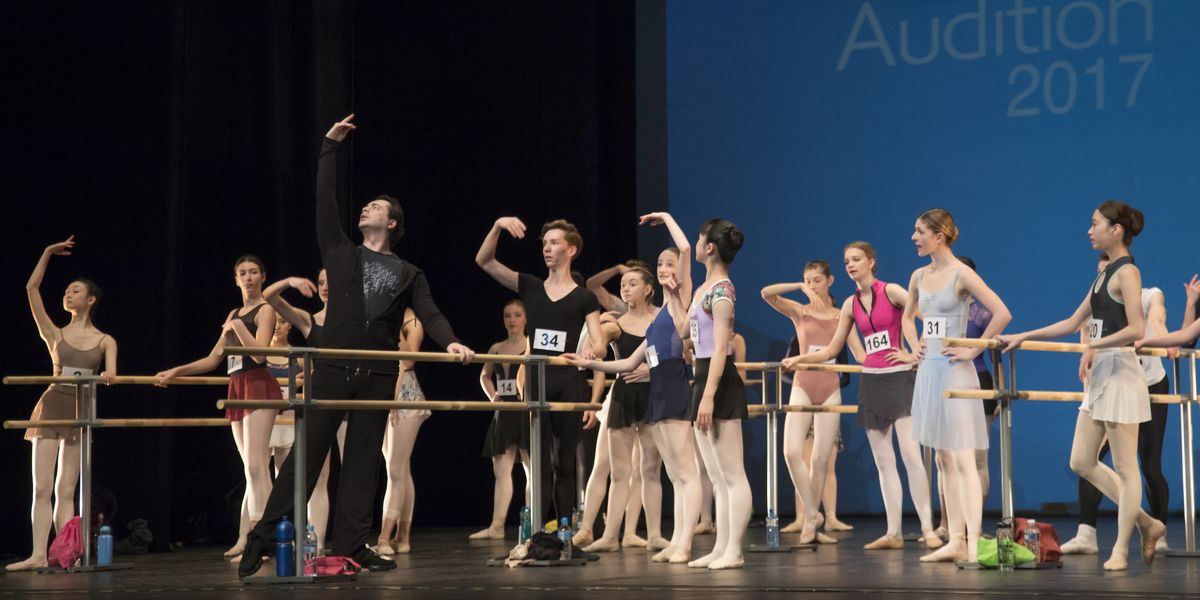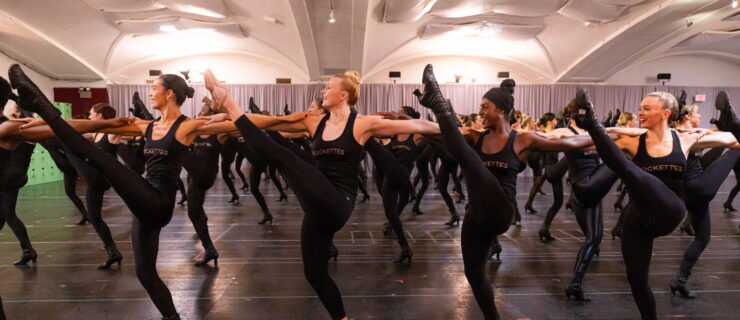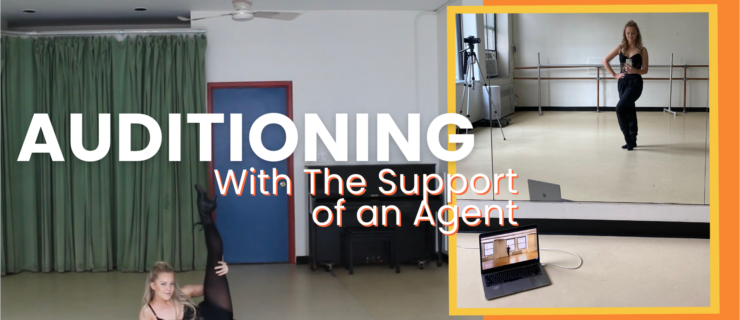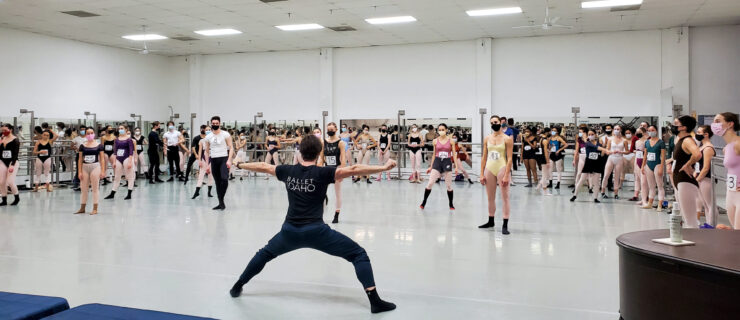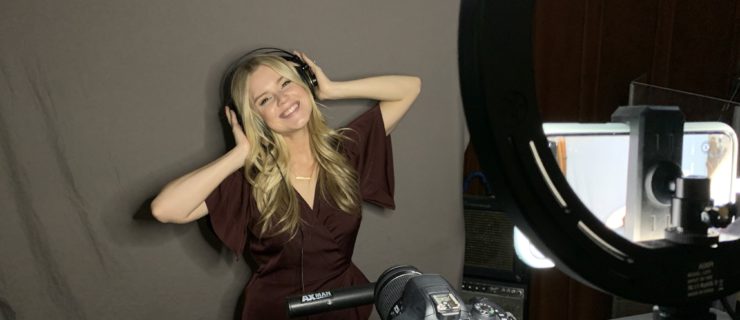Inside the Audition That Lets Dancers Try Out for 10 Ballet Companies at Once
Hopping from city to city during audition season can be both expensive and time-consuming—not to mention disheartening if you end up being cut after barre. Since its inception in 2016, the Grand Audition has aimed to solve that conundrum for young ballet dancers looking for a job: This annual two-day event in Europe provides an unprecedented opportunity to audition for 10 companies at once.
“Our main goal is really to help dancers,” says David Makhateli, a former principal with The Royal Ballet who launched the Grand Audition with his wife, dancer Daria Makhateli. With 10 artistic directors from a wide range of countries present, a dancer who might not fit one company’s requirements has many more opportunities to be noticed. The prestigious lineup includes top international companies as well as midsized ones: This February, the Mariinsky Ballet, Dutch National Ballet and Royal Swedish Ballet will be represented, among others. Most companies are based in Europe, but American directors have also taken part in past editions, namely American Ballet Theatre’s Kevin McKenzie and Atlanta Ballet’s Gennadi Nedvigin.
A New Way to Job Hunt
Makhateli first came up with the concept when he was a student himself, in the 1990s. Originally from the country of Georgia, he won a scholarship at the 1992 Prix de Lausanne and finished his training at the Royal Ballet School in London, but struggled with the cost of traveling to auditions in his final year.
His vision was first realized in Brussels, Belgium, in 2016, and since last year, the Grand Audition has been held in Barcelona, Spain, where Makhateli is now based. The demand has been overwhelming, he says: Interested dancers are required to apply online with photos and a recent performance or training video of their choice for pre-selection, which is done by a professional committee. (For dancers unsure whether they are up to par, that initial screening can save the cost of traveling.) “Last year we had over 300 applications, and we stopped at 177 contestants,” he says. “For me, quality is important, and it’s also important that everybody is able to be seen in class.”
For 19-year-old Jacob Roter, from Brooklyn, New York, the Grand Audition was a handy way to fulfill his dream of a European career. “I didn’t want to go to every country to audition,” he says. At the 2017 edition, he won a contract with Norwegian National Ballet’s junior company, and also got an offer from Atlanta Ballet. “What’s really cool is that you get to see how different directors are, how they represent their companies,” he says.
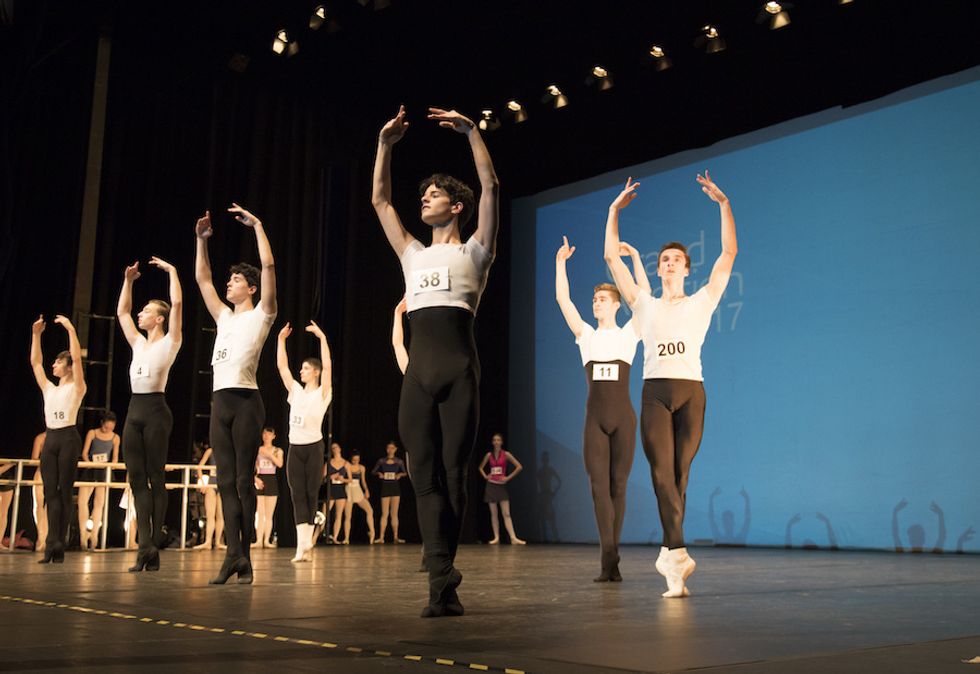
The two-day audition begins with a straightforward technique class. Photo by Andrej Uspenski, Courtesy Grand Audition.
An Inclusive Experience
The first day, all contestants take a full class—a “basic one,” says Makhateli—in age groups on the slightly raked stage of the Teatre-Auditori Sant Cugat. The 10 directors then select the dancers they’re each interested in for the next round. On the second day, those who are chosen perform a classical variation they prepared ahead of time from the Grand Audition’s list. “It feels a little bit like a performance,” Roter says. “If you get into the second round, you’re able to really dance and show what you have artistically.” Last year, 51 dancers made it to the variation stage, and 44 (approximately a quarter of all contestants) were then invited to one-to-one interviews with one or more directors, resulting in 28 contract offers.
One requirement for directors to participate is to have contracts available, Makhateli says, although they are under no obligation to hire anyone at the Grand Audition. Unlike at competitions, they don’t sit behind a table. “They can make remarks, go up onstage,” Makhateli says. Some, like the Mikhailovsky Ballet’s Mikhail Messerer, have hired multiple dancers, or recommended some to colleagues who weren’t in attendance. “The directors were literally backstage with us, and it was really intimate,” Roter remembers. “Everybody who got past the first round ended up meeting directors, even when they didn’t get a job.”
The only criteria for dancers to apply is that they are professionally trained. “I don’t have height requirements or anything. We have a variety of dancers,” says Makhateli. The age range also aims to be inclusive: It was set at 17 to 26 years old after discussions with directors. “At 17, you can be hired in a junior or main company, and at 26, they are dancers with experience, who may be looking for a change.” Some soloist and principal contracts have been awarded to more mature contestants, although the Grand Audition doesn’t advertise them to avoid misleading hopeful dancers.

Class onstage at Barcelona’s Teatre-Auditori Sant Cugat. Photo by Andrej Uspenski, Courtesy Grand Audition.
The Grand Audition is an international affair: The 2017 edition had contestants from 27 countries, including Japan and Australia, and 13 dancers from the U.S. Roter met with friends from his training days there, and while some of them didn’t get past the first round, he says he found the group atmosphere more comforting than his experience at regular auditions in Berlin and Prague.
Makhateli’s main advice for dancers is to be professional from the start—photos and videos submitted with the application are then shared with interested directors—and to choose variations carefully: “Show your best qualities. Don’t do a variation that doesn’t suit you, like a turning variation if you can’t turn.” Originality can also be key: Last year, the only Esmeralda was luckier than the many Auroras at the variation stage.
At about $400, the registration fees are steeper than those at traditional auditions, but it can be more cost-effective than traveling to a range of cities. “It’s totally the dancer’s choice, but if you audition for separate companies, just a flight inside Europe could cost you that much,” says Makhateli. A year down the road, Roter is happily settled at Norwegian National Ballet 2, which he admits he had never heard about before the Grand Audition. “I think it’s an ambitious thing to go for, but if you really want to dance in Europe, it’s totally worth it.”
